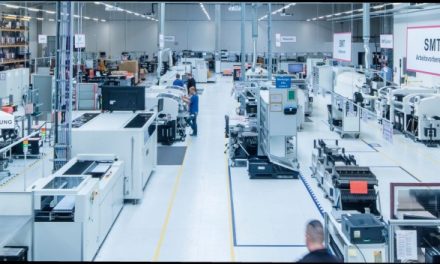The Path Forward with IoT and Big Data Management
By Zac Elliott, Technical Marketing Engineer, Mentor
Nov 02, 2017
Companies that prudently maintain their traditional strengths while implementing new technologies will have the greatest chance of maintaining their positions as pioneers in the coming digital age.
The electronics and PCB manufacturing industry has been taking the step toward Industry 4.0 by investing in automation and shop-floor control systems. And, with the introduction of IoT technology and machine-to-machine communication, factory managers are now able to collect large amounts of data about what’s happening on the shop floor in real time.
But what is to be done with all that data? How will companies be protected from drowning under this deluge of information? The answer is business intelligence that can analyze IoT data in a useful way—smart software that can automatically translate all of this data into meaningful and actionable reports, and that is easily configurable. Manufacturing no longer can get by with just analytics software. Down on the shop floor, business intelligence software has to be able to process information from individual machines as well as the entire factory to provide true insight on what’s happening with all manufacturing processes in real time. Such software has to answer three questions: (1) what happened, (2) why it happened, and (3) what happens next [9]. As the investment in and revenue from IoT initiatives increase, manufacturers cannot afford to wait for an intelligent solution to manage all of this incoming data and put it to good use.
Traditionally, manufacturers have focused their attention on reducing waste in their production processes and improving product quality and yield. However, electronic products have changed drastically even just in the past 10 years, and manufacturers have had to adapt to a new market reality to stay profitable and competitive at the same time. These changing market demands have caused the electronics manufacturing industry to switch from high-volume, low-mix manufacturing to low- or medium-volume, high-mix products. Whereas high-volume, low-mix lines can be expected to make several products within minutes, a low-volume, high-mix line will make the same quantity of products over an entire day. This variation in products, along with the fixed costs of production, SMT machine investment, direct and indirect labor costs, etc., in the high-mix situation are more than 250 times higher than for high volume. Manufacturers have to find a way to minimize this greater cost while achieving comparable levels of productivity.
Increasing requirements for product quality and reliability also contribute to the growing need for meaningful business intelligence in electronics manufacturing. Greater demands and expectations from industries such as aerospace, automotive, communications, and medical put pressure on manufacturers to ensure their customers that their factory operations are working properly and optimally. Analyzing data simply is not enough. Company managers need to be able to use the data to create knowledge that will positively affect manufacturing for their customers.
What Does Intelligence in Electronics Manufacturing Look Like?
As IoT technology plays a greater role in the manufacturing world, factory managers will be able to take their efficiency and waste-reduction efforts to the next phase using business intelligence. Advanced intelligence will help electronics manufacturers cope with the sheer number and complexity of production activities that affect their yields and reliability, providing a granular approach to diagnosing and correcting process flaws. Operations managers can use a business intelligence tool to take a deep dive into historical process data, identify patterns and relationships among discrete process steps and inputs, and then optimize the factors that prove to have the greatest effect on yield.
A business intelligence solution should provide dashboards that can be easily configured to address specific requirements and to provide real-time performance indicators. Data needs to be presented in an informative, intuitive way that provides both high-level information on what is happening on the shop floor and lower level information about each stage of the manufacturing process. Such a solution needs to provide the capability for easy drill-down analysis, and it should include self-creating capabilities to automate further insight and higher granularity of the analysis, eventually leading operators to detection of the root cause for problems on the shop floor. Intelligence reports need to be automatically generated and distributed appropriately, which would reduce the response time to critical issues while removing the tedious task of compiling daily, weekly, and/or monthly reports. Targeting meaningful reports to specified recipients improves communications and teamwork, while improving transparency.
With IoT applications constantly gathering huge amounts of real-time, shop-floor data, what is needed now are solutions that can automatically aggregate these isolated data sets and analyze them intelligently to reveal important insights. Business intelligence has to be the next step to leverage the vast amounts of data gathered by IoT initiatives, enabling better decision-making and ultimately reducing cost and waste throughout manufacturing as the industry moves into a more digital future.
Zac Elliot took part in a SCOOPstudio debate at SMTAi – https://www.emsnow.com/npps/story.cfm?pg=story&id=61776













